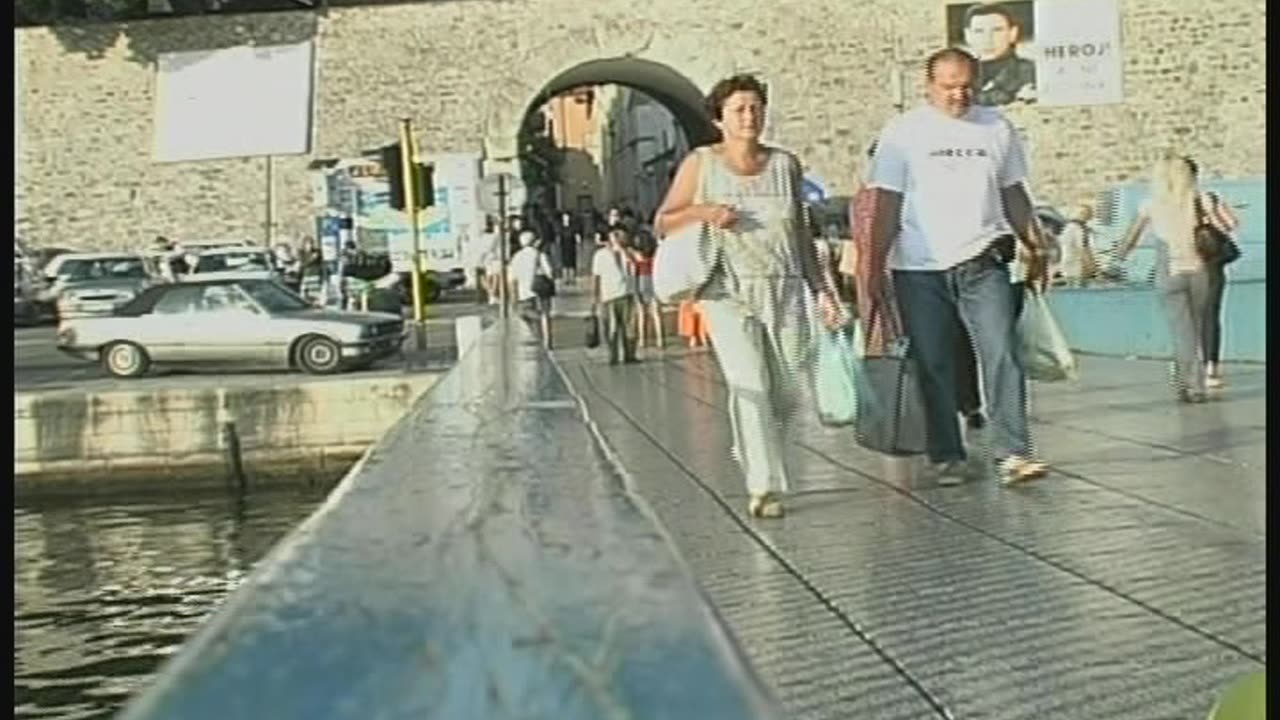Premium Only Content

Milan Kohout, "Hitler’s Mustache",Instalation, Zadar, 2001
Zadar, Croatia; street installation as part of an international art exchange program between Mobius and artists from Zadar, August 2001.
Installation:
When Kohout arrived in Zadar, prosecutors for the Hague Tribunal had just announced the in- dictment of Croatian General Ante Gotovina for atrocities committed during the military operation “Storm” in 1995. The Croatian army, led by this general, had expelled thousands of Serb, Muslim, and Romani (Gypsy) civilians from so-called “Croatian territories.” Many civilians who had refused expulsion were killed. Gotovina, a native of Zadar, proclaiming innocence, had refused to surrender to the tribunal, and had gone into hiding.
In Zadar, the Gotovina case stirred passions and locals erected a billboard with a picture of the gen- eral, proclaiming him a hero, not a criminal. The case also brought to life the legacy of past fascism supported by some Croatians. Croatia was a fascist ally to Hitler’s Germany during the Second World War, and Zadar was at that time a part of fascist Italy. For some, Gotovina serves as an archetype, like Mussolini or Hitler. Signs of the ghosts of these feelings are the swastikas, anti-Semitic, anti-Gypsy, and anti-Muslim statements that can be seen on the city walls.
In Kohout’s words:
“I made a billboard of the exact same dimensions as the Gotovina billboard and painted the sur- face plain white, symbolizing his self-proclaimed innocence. Then I painted a little black square (black is the color of fascism) exactly at the place where there would be a mustache on the face of Gotovina on the other billboard if the two were superimposed. I placed my billboard symmetrically opposite the Gotovina billboard, which was situated next to one of the main gates to the old city.
“It survived there for two days, until I was interviewed by both a regional newspaper and television station, and I explained my idea of superimposing Hitler’s mustache (the small black square) on the image of Gotovina’s face. Within a couple of hours after the newspapers were published, local peo- ple attacked my billboard and destroyed it. I was also advised to beware of possible attacks against me if I went out in public.
“The piece ignited a passionate discussion among local people and in the regional media. In a sub- sequent interview, I proclaimed the constitutional right for freedom of speech, which is provided by the Croatian constitution, and demanded that respect for expression, even opposing opinions, should be developed in society.”
-
 23:42
23:42
The Kevin Trudeau Show Limitless
2 days agoThe Brotherhood’s Ancient Mirror Code Revealed
21.9K11 -
 10:18
10:18
Colion Noir
4 hours agoViral TikTok Proves Gun Owners Wrong?
22.3K31 -
![MAHA News [11.28] Team MAHA Dropping Bombs, Pesticide Fight, Campbell's Soup Outed, Save Ranchers](https://1a-1791.com/video/fwe2/11/s8/1/O/6/L/D/O6LDz.0kob-small-MAHA-News-11.28.jpg) LIVE
LIVE
Badlands Media
14 hours agoMAHA News [11.28] Team MAHA Dropping Bombs, Pesticide Fight, Campbell's Soup Outed, Save Ranchers
318 watching -
 1:01:18
1:01:18
DeVory Darkins
3 hours agoBREAKING: Trump issues fatal update to National Guard shooting
104K71 -
 49:57
49:57
The Quartering
3 hours agoTrump UNLOADS, Walmart Black Friday Madness & Trans Taco Bell Attack
17K29 -
 39:51
39:51
Tucker Carlson
3 hours agoGeorge Galloway Speaks Out on Being Forced Into Exile After Criticizing Ukraine War
27.8K90 -
 21:23
21:23
Neil McCoy-Ward
2 hours ago🔥 While You're Working Hard... They're Planning To Take EVERYTHING From You!!!
6.15K2 -
 2:13:37
2:13:37
Side Scrollers Podcast
5 hours agoTwitch CONTROVERSY Hit New Low + Reddit Mods QUIT + FireMAN is Now Sexist + More | Side Scrollers
66K7 -
 5:31
5:31
John Rich Official
13 days agoThe Righteous Hunter by John Rich
23.4K11 -
 59:51
59:51
Rebel News
3 hours agoEby threatens to block pipeline, Guilbeault out of cabinet, Land disputes continue | Rebel Roundup
24.7K4